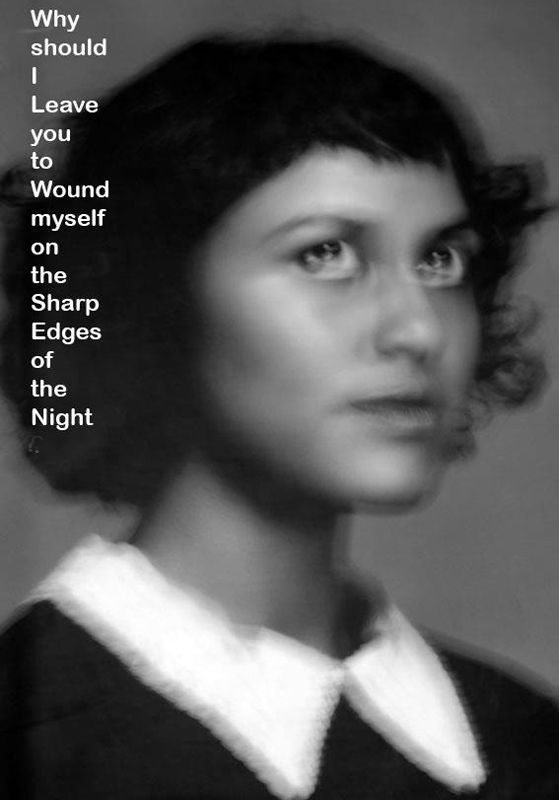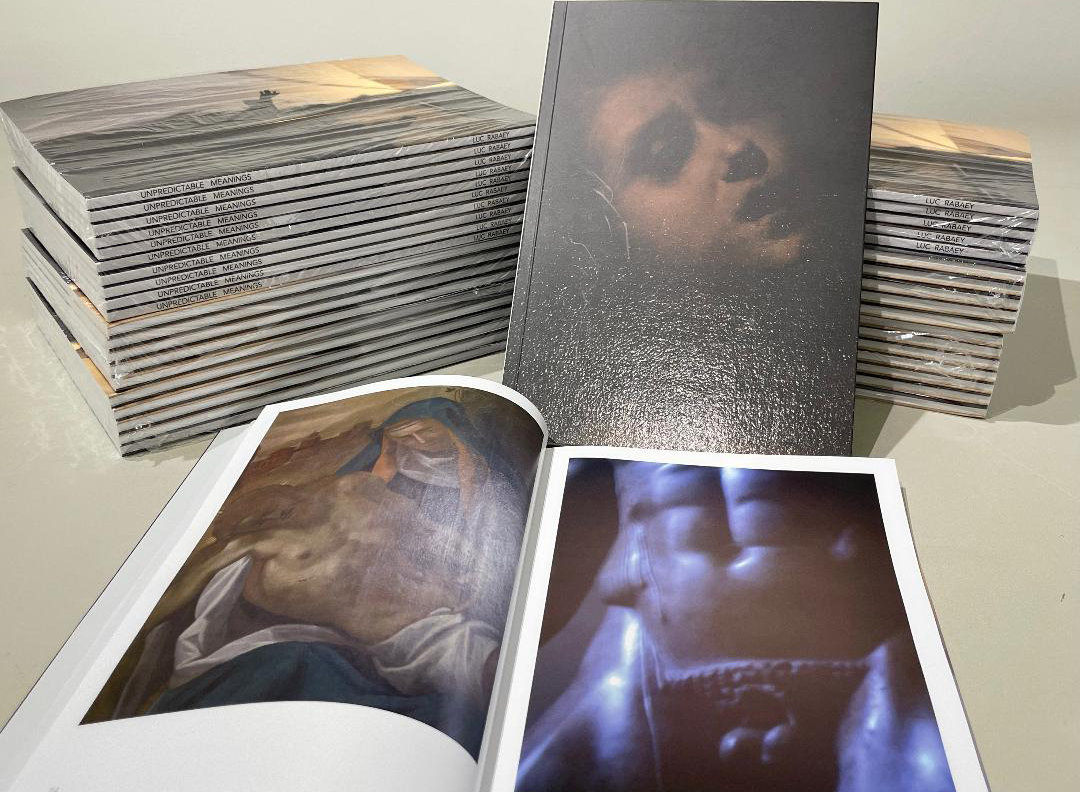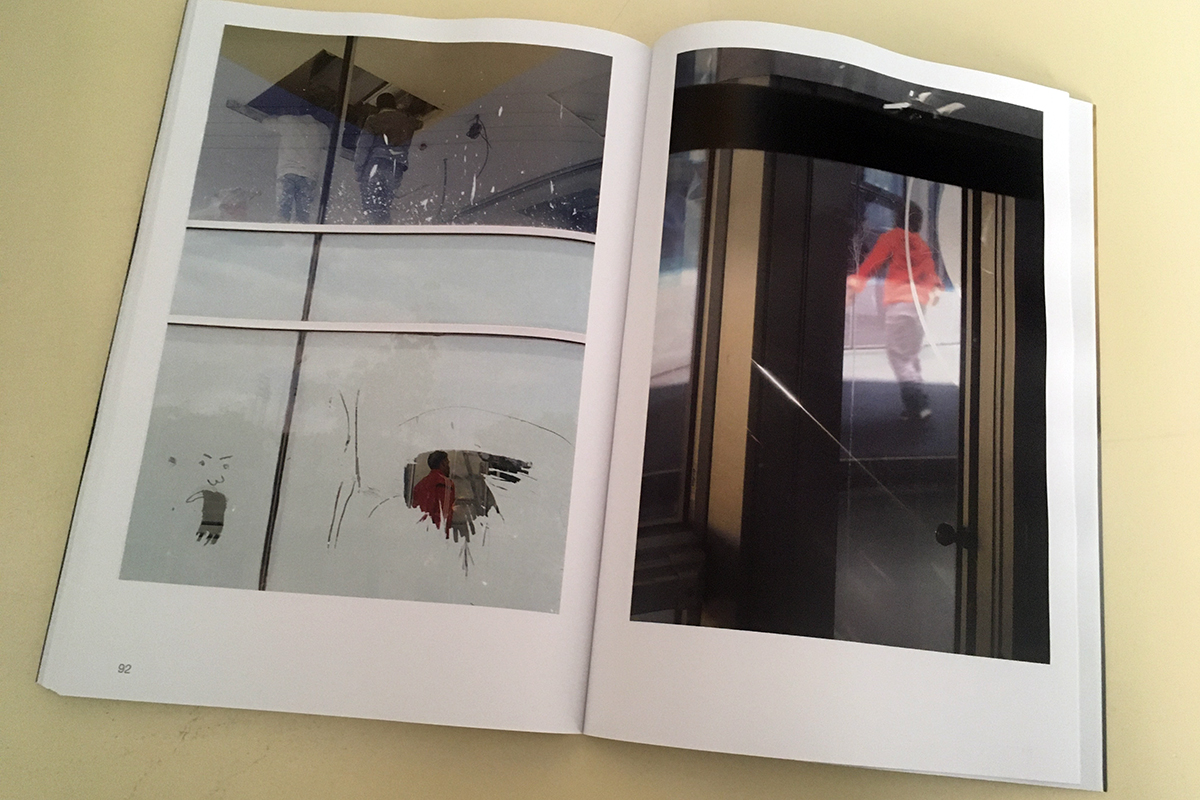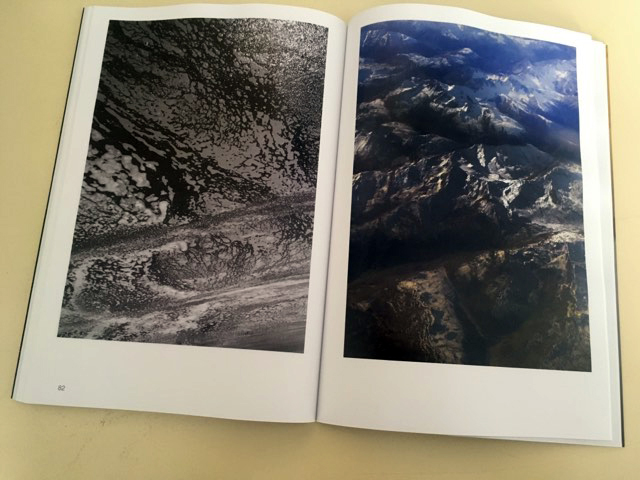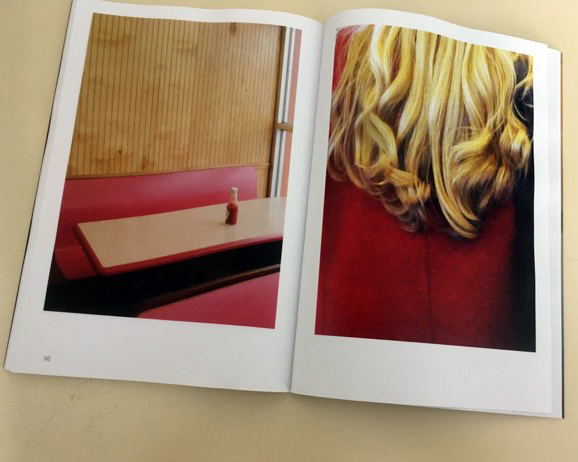|
|
||||||||||||||
|
|
Why should I Leave You, to Wound Myself on the Sharp Edges of the Night.
The Taxi
When I go away from you The world beats dead Like a slackened drum. I call out for you against the jutted stars And shout into the ridges of the wind. Streets coming fast, One after the other, Wedge you away from me, And the lamps of the city prick my eyes So that I can no longer see your face. Why should I leave you, To wound myself upon the sharp edges of the night?
Amy Lowell
The book was self-published on the occasion of the Brugge Foto exhibition at the Schipperskapel Brugge, from December 8, 2016 untill January 8, 2017. First edition of 50 copies. 40 pages. A few copies left for 20 €, numbered and signed.
Unpredictable Meanings
Unpredictable Meanings is a simple visual examination of the confluence of circumstances. The project started from a simple discovery: after the photo is taken, its life begins; photos have several meanings depending on the context in which they appear. In this book, the context is determined by connecting images in surprising diptychs.
A collision between free particles. Steve Bisson
Chaos holds a primarily negative connotation in common acceptance. The term is often associated with the disorder, confusion, and jumble. All this suggests that harmony filters through some sequence, classification, artificial, divine, and supernatural force that creates an ordering, hierarchical principle in some comforting way. Our vision of the universe and evolutionary history moves from these premises. From a primordial soup of elements, we moved on to increasingly complex and organized forms. Clouds of scattered cosmic matter have settled in recognizable planets that move on precise mathematics and interpretable trajectories. The perception of the visible (which, for convenience, we call reality) works by approximation. Among the most advanced in the animal world, our optical apparatus allows us to recognize various shapes, colors, movements, shades, and gradations. However, modern physics investigating the substance at micro and infinitesimal scales has shown us how there is a matter that escapes the gaze and that is invisible to our eyes. In addition, the ‘psychedelia’ of quanta explains that there are no definite properties or objects for themselves, but everything is a relationship, proces, or event. Luc Rabaey, like before him the gang of boys who overturned classical physics at the beginning of the twentieth century, questions the existence of the visible, starting from the simple but irrefutable consideration that every photograph lives in the context in which it appears. In other words, each image is an event that has meaning and sense for the instant of observation and, therefore, for the observers themselves. We can therefore argue that there is no photograph as an object except in relation to the time and space in which it presents itself or becomes represented. Suppose we shift the reflection into the boundless production of ‘pics’ that populate our imaginaries or are being proposed to us from “the outside” in different ways and formats. In that case, one wonders if there are coincidences or possible connections. Borrowing the famous title of Lorenz’s lecture, “Does the flap of a butterfly’s wings in Brazil set off a tornado in Texas?”, I wonder if in this pulverization of images, to which we are all exposed, a click in Syracuse can cause an earthquake in Chile? In the age of the scopic drive, and the ‘psychodrama’ of looking as an end unto itself, Rabaey invites us to problematize the obvious. We can focus on our relationship with the world mediated by technology; and on the potential textures of meaning deriving from our “visual actionism,” not necessarily motivational, topological, or contextual as often understood by critics. To search for hidden threads that weave a kaleidoscope of directions that are as possible as unlikely for our expressiveness. And this is, perhaps, a therapeutic attempt, at most subconscious, to circumvent the peculiar claim to objectivity inherent in the mechanics of image production and to partially reveal those regimes that domesticate our desires. Exposure to “randomly selected” photographs, as in Rabaey’s case, can represent an apparent hiccup or an insignificant event capable of occasionally unlocking a systemic vision. Yet, behind a manifestation of random and asymptotic behaviors and courses, we may recognize the illusion of permanence in the gaze, and the possibility, however remote, of a collision between free particles.
Photography, concept & design by Luc Rabaey. Texts from Lieven Lefere, artist and curator Track & Trace Festival Kortrijk Belgium & Steve Bisson, Chair of Photography at Paris College of Art, Art Director at Lab27 Treviso Italy, Co-Founder & Producer Blurring the Lines, Chief Editor Urbanautica.
Published by Fototeca Siracusana Libri, Siracusa Italy 2023 on the occasion of the exhibition at Fototeca Siracusana, May 2023. Printed by PressUP, Viterbo, Italy. Softcover, 170 x 240 mm, 110 pages, 80 photographs. ISBN 9788894546330 © Luc Rabaey for the photographs © the authors of the texts © 2023 All rights reserved.
Limited edition of 100. A few copies left for 20 €, numbered and signed.
|
||||||||||||||
|
|
|||||||||||||||
